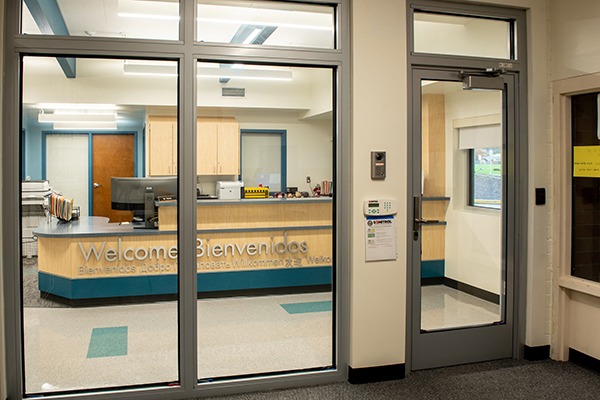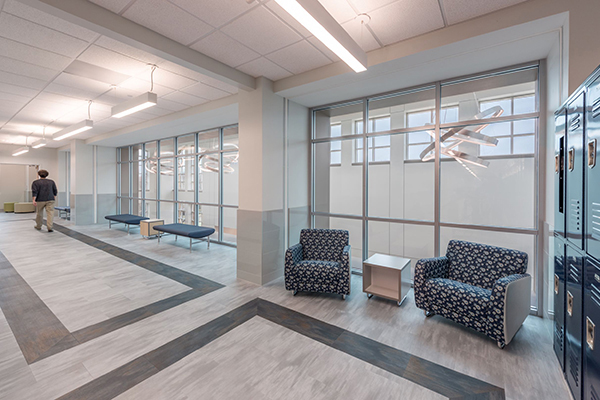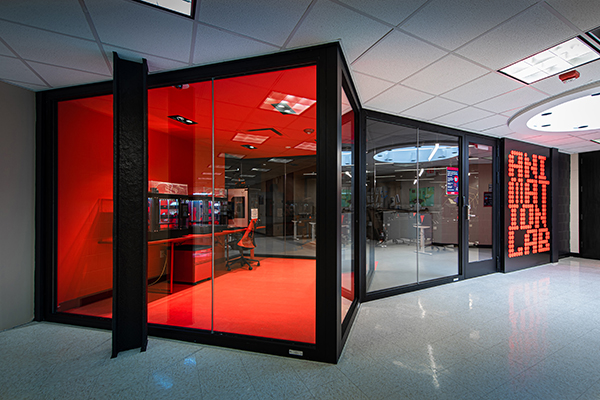
Code requirements for fire-rated windows can depend on a building’s use as well as where within the built environment the window is placed. Further, the specific level of fire protection or resistance required for a fire-rated window can vary significantly between projects as local governments can amend model fire and life safety codes. As such, designers are encouraged to contact a local Authority Having Jurisdiction (AHJ) to ensure they understand which codes to reference for a given project.
In general, fire-rated materials are almost universally required in three main areas: along paths of egress, within fire and smoke barriers and on exterior walls that are 10 feet or less from a property line. When a window is placed within these areas, it will most likely need a fire rating. It is important to note that a fire-rated window’s rating will often need to be equal to or greater than that of the wall it’s within. For certain applications, windows that do not exceed 25 percent of a wall’s total area may have a rating lower than the wall.

Aside from protecting occupants from fire, smoke and heat (with fire-resistant-rated materials), fire-rated windows can bolster visual connections between spaces and provide access to daylight. For areas where occupants spend a majority of their time, increased access to daylight can help regulate circadian rhythms, reduce eyestrain and improve mood.
But the benefits of fire-rated windows can also extend into the design of often overlooked areas of the built environment, particularly stairwells. As paths of egress, stairwells used to be limited to dark and tucked away designs due to required fire ratings. However, fire-rated windows and doors can open stairwells up to be stunning architectural features in their own right.

Fire-rated windows can be used throughout the built environment to meet fire- and life-safety code requirements. This includes exterior and interior walls, within storefronts, as a part of building compartmentalization and more. Fire-rated windows can both help ensure a code-compliant design and improve occupant experience by increasing access to natural light and visual connection between adjacent spaces.